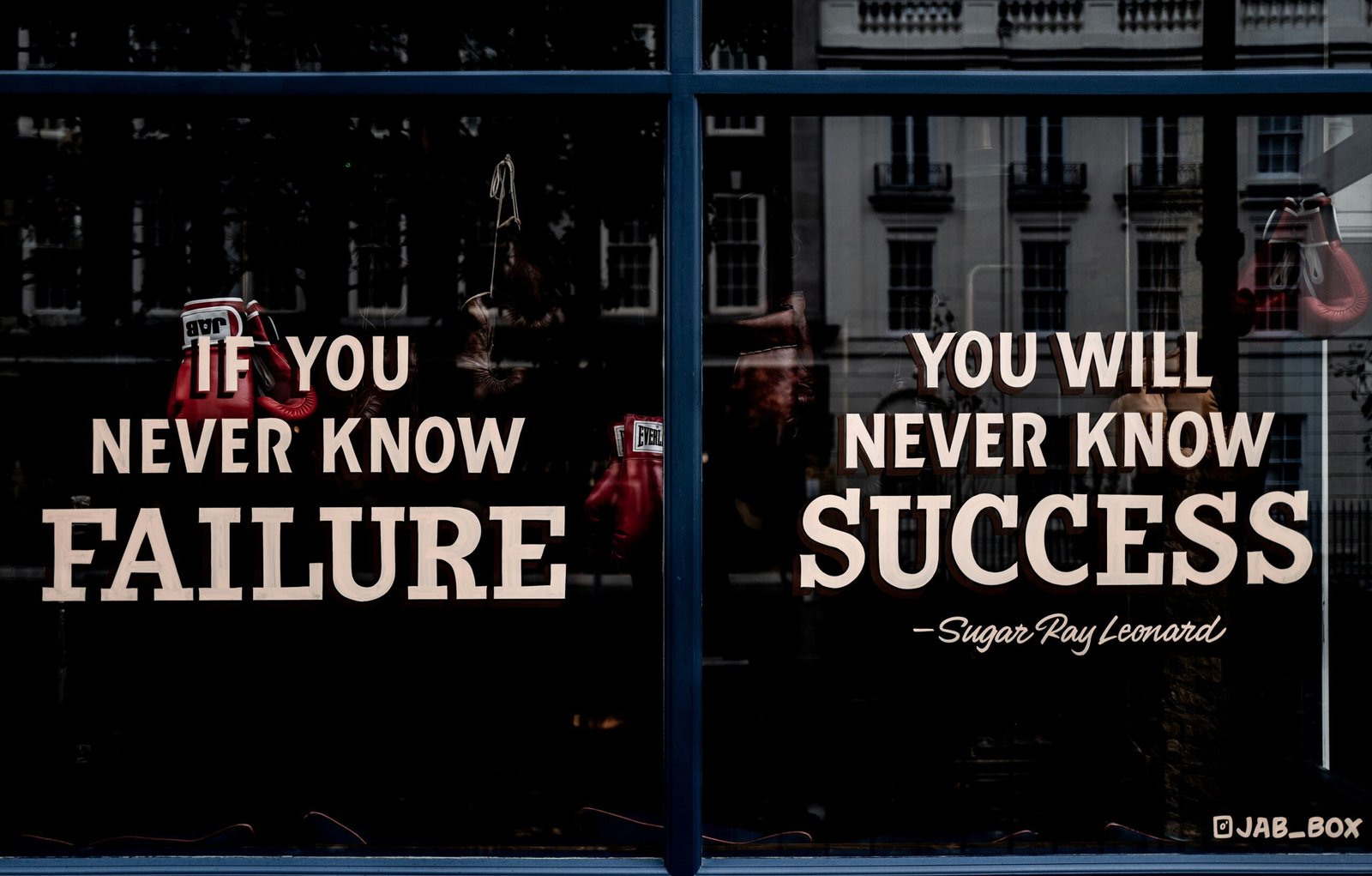Introduction: Embracing Failure as a Learning Opportunity
Failure is an inevitable part of the human experience, an outcome that everyone encounters at various points in life. Despite its universality, society often stigmatizes failure, viewing it as a negative and undesirable result. This perception can deter individuals from taking risks or stepping out of their comfort zones, ultimately hampering their personal and professional growth.
However, a paradigm shift in how we perceive failure can unlock a wealth of opportunities for learning and improvement. By embracing failure as a natural and essential component of growth, individuals can harness the lessons it offers and apply them to future endeavors. Understanding that failure is not an endpoint but rather a stepping stone to success is crucial for fostering resilience, innovation, and continuous development.
In this blog, we will explore three valuable lessons that can only be learned through failure. These lessons encompass insights that are not typically acquired through success alone, highlighting the profound impact that failure can have on our lives. By recognizing and internalizing these lessons, we can transform our approach to challenges and setbacks, ultimately leading to more meaningful and sustained achievements.
As we delve into these lessons, it is important to keep an open mind and acknowledge the potential growth that lies within each failure. Rather than shying away from mistakes, we should view them as opportunities to gain new perspectives, refine our strategies, and build the resilience needed to overcome future obstacles. In doing so, we can foster a healthier and more productive relationship with failure, one that empowers us to strive for excellence despite the inevitable setbacks we may encounter.
Lesson 1: Building Resilience and Perseverance
Experiencing failure is an integral part of building resilience and perseverance. When individuals face setbacks and work through them, they cultivate a robust and determined mindset. This process of confronting failure and not surrendering to it is what fortifies one’s inner strength and persistence. It is through these challenging experiences that people learn to endure hardships and emerge stronger.
Many well-known figures exemplify the importance of resilience and perseverance in achieving success. Take Thomas Edison, for instance, who famously conducted thousands of unsuccessful experiments before finally inventing the electric light bulb. His unwavering determination and resilience in the face of repeated failures eventually led to one of the most significant technological advancements in history. Similarly, J.K. Rowling, the author of the Harry Potter series, faced numerous rejections from publishers before her work was accepted, ultimately becoming one of the best-selling authors of all time. These examples illustrate that enduring and overcoming failures can pave the way to monumental achievements.
The psychological benefits of developing resilience are profound. Resilient individuals often exhibit improved stress management skills. When faced with adversity, they are better equipped to handle stress and maintain a balanced outlook. Moreover, resilience fosters increased adaptability, allowing individuals to navigate changes and uncertainties more effectively. This adaptability is crucial in both personal and professional spheres, as it enables individuals to respond to new challenges with confidence and agility.
In essence, the lessons learned from failure extend far beyond the immediate context. They build a foundation of resilience and perseverance that supports long-term success and personal growth. By embracing and learning from their failures, individuals not only enhance their ability to tackle future obstacles but also cultivate a mindset that values persistence and resilience as key components of achievement.
Lesson 2: Gaining Self-Awareness and Identifying Weaknesses
Failure serves as a crucial mirror, reflecting aspects of ourselves that may otherwise remain hidden. It highlights areas where improvement is needed, offering a unique opportunity for self-awareness and growth. Self-awareness, the ability to critically evaluate one’s actions, decisions, and skills, is indispensable for personal development. When faced with failure, individuals have the chance to delve deeply into their experiences, uncovering weaknesses that may have contributed to their setbacks.
To harness the lessons from failure effectively, conducting a post-failure analysis is essential. Start by objectively assessing what went wrong. Ask probing questions such as, “What decisions led to this outcome?” and “Which skills were lacking?” This introspection helps pinpoint specific areas for improvement. Additionally, seeking feedback from others who were involved can provide valuable perspectives and insights that one might overlook. Combining self-reflection with external feedback creates a comprehensive view of the situation.
Once weaknesses have been identified, the next step is to create a plan to address them. Set realistic and achievable goals to develop the necessary skills and knowledge. For example, if poor time management contributed to the failure, consider enrolling in a time management course or using productivity tools. Regularly revisiting and refining this plan ensures continuous growth and adaptation.
Many notable individuals have transformed their failures into stepping stones for success through heightened self-awareness. Take the case of Thomas Edison, whose numerous unsuccessful attempts to create the electric light bulb taught him the importance of perseverance and innovation. Each failure revealed a new understanding, ultimately leading to his monumental success. Similarly, Oprah Winfrey faced early career setbacks that highlighted areas for improvement, which she subsequently addressed, leading to her becoming a media mogul.
In essence, failure is not just an endpoint but a powerful catalyst for self-awareness and personal development. By embracing the insights gained from failure, individuals can identify their weaknesses, devise strategies to overcome them, and ultimately achieve greater success.
Lesson 3: Encouraging Innovation and Creativity
Failure often serves as a powerful catalyst for innovation and creativity, pushing individuals to think beyond conventional boundaries and explore uncharted territories. When people are not paralyzed by the fear of failure, they are more likely to experiment with new ideas and approaches, leading to groundbreaking discoveries and solutions. History is replete with examples of famous inventions and innovations that emerged from initial failures.
Consider the story of Thomas Edison, whose numerous unsuccessful attempts ultimately led to the invention of the electric light bulb. Edison famously remarked, “I have not failed. I’ve just found 10,000 ways that won’t work.” His persistence and willingness to learn from each failure exemplify the innovative spirit that can arise when failure is embraced as part of the creative process.
Similarly, the development of Penicillin by Alexander Fleming was the result of a failed experiment. Fleming’s accidental discovery of the mold’s antibacterial properties marked a significant breakthrough in medical science, revolutionizing the treatment of bacterial infections. This serendipitous innovation underscores the value of maintaining an open mind and being receptive to unexpected outcomes.
In the corporate world, companies like Google and 3M have institutionalized the concept of learning from failure to foster a culture of innovation. Google’s famous “20% time” policy allows employees to spend a portion of their work hours on projects that interest them, regardless of their direct applicability to the company’s immediate goals. This freedom to explore and potentially fail has led to the creation of successful products such as Gmail and AdSense. Similarly, 3M’s Post-it Notes were born out of a failed attempt to create a super-strong adhesive.
Establishing a growth mindset and an environment that encourages experimentation and learning from mistakes is crucial for fostering innovation and creativity. When individuals and organizations view failure not as a setback but as an opportunity for growth and improvement, they unlock their full potential to develop novel solutions and ideas. By embracing the lessons that failure teaches, we can cultivate a more innovative and creative society.
The Role of Reflection in Learning from Failure
Reflection serves as a cornerstone in the process of learning from failure. It is through reflection that individuals can dissect their experiences, derive meaningful insights, and foster personal growth. One effective strategy for reflection is journaling. By documenting thoughts, emotions, and actions associated with a failure, individuals can gain a clearer understanding of what went wrong and why. Journaling not only assists in organizing thoughts but also provides a tangible record that can be revisited for continuous learning.
Seeking feedback from others is another vital component of reflective practice. Constructive feedback from peers, mentors, or colleagues offers diverse perspectives that might have been overlooked. This external input can illuminate different aspects of the failure, making it easier to identify areas for improvement. Engaging in honest self-assessment is equally crucial. It requires individuals to critically evaluate their own contributions to the outcome, acknowledge mistakes, and recognize their limitations. This level of honesty fosters a deeper sense of accountability and paves the way for genuine progress.
Reflection aids in internalizing the lessons learned from failure, transforming these experiences into valuable knowledge that can be applied to future endeavors. By reflecting, individuals can develop a more nuanced understanding of their strengths and weaknesses, which can inform better decision-making and strategy formulation in the future. Additionally, reflection nurtures resilience, as individuals become more adept at coping with setbacks and viewing them as opportunities for growth rather than insurmountable obstacles.
Mentors and coaches play an instrumental role in guiding reflective practices. Their experience and wisdom can help individuals navigate the complexities of failure and reflection. Mentors can provide a safe space for candid discussions, offer advice on effective reflection techniques, and encourage consistent practice. By fostering a supportive environment, mentors empower individuals to embrace failure as a valuable learning experience and to continually refine their reflective skills.
Overcoming the Fear of Failure
Failure is often perceived as a daunting, negative experience that can cast a long shadow over our aspirations and achievements. This fear of failure can be paralyzing, hindering personal growth and progress. However, overcoming this fear is crucial for success and development. By setting realistic goals, adopting a positive mindset, and viewing failure as a temporary setback rather than a permanent defeat, individuals can transform their approach to challenges.
One effective way to overcome the fear of failure is to set realistic, achievable goals. Instead of aiming for perfection, break down your objectives into smaller, manageable tasks. This approach not only makes the goals less overwhelming but also allows for incremental progress, making it easier to see and measure success. For instance, rather than aiming to write an entire book in a month, set a goal to write a chapter each week. This method reduces the pressure and makes the overall task seem more attainable.
Adopting a positive mindset is another key strategy. Embrace the idea that failure is a natural part of the learning process. Thomas Edison, the inventor of the light bulb, famously said, “I have not failed. I’ve just found 10,000 ways that won’t work.” This perspective shifts the focus from the negative aspects of failure to the valuable lessons it provides. Viewing failure as a learning opportunity rather than a definitive end helps build resilience and encourages continuous improvement.
Moreover, it’s essential to see failure as a temporary setback. Many successful individuals have faced numerous failures before achieving greatness. For instance, J.K. Rowling, the author of the Harry Potter series, was rejected by multiple publishers before her work was accepted. Her story highlights that persistence and resilience are vital components of success. By understanding that failure is not a permanent state but rather a stepping stone to success, individuals can maintain their motivation and continue striving towards their goals.
In conclusion, overcoming the fear of failure involves setting realistic goals, maintaining a positive mindset, and viewing failure as a temporary setback. These strategies empower individuals to face challenges with confidence and resilience, ultimately leading to personal growth and success.
Creating a Failure-Friendly Environment
In today’s fast-paced world, creating a failure-friendly environment is crucial for fostering innovation, creativity, and resilience. Whether at home, in schools, or in workplaces, an atmosphere that encourages learning from failure can significantly impact personal and organizational growth. By understanding the importance of embracing failure, leaders and educators can create spaces where individuals feel safe to take risks and learn from their mistakes.
Supportive environments that prioritize learning from failure often see heightened levels of creativity and innovation. For example, companies like Google and 3M have implemented policies that encourage employees to experiment and fail without fear of repercussion. Google’s “20% Time” policy allows employees to spend a portion of their work hours on projects they are passionate about, even if those projects do not have immediate commercial value. Similarly, 3M’s culture of innovation has led to the creation of products like the Post-it Note, which was initially a failed adhesive experiment.
Educational institutions have also recognized the value of a failure-friendly environment. The d.school (Hasso Plattner Institute of Design) at Stanford University is a prime example. Their curriculum emphasizes design thinking and iterative processes, encouraging students to prototype, test, and refine their ideas. By allowing students to fail and learn from their mistakes, the d.school fosters a culture of resilience and problem-solving.
For leaders and educators seeking to cultivate such environments, practical steps can be taken to make failure an integral part of the learning process. Encouraging open communication and providing constructive feedback are essential. Rewarding effort and learning, rather than just success, can shift the focus from avoiding failure to embracing it as a valuable teacher. Additionally, sharing stories of famous failures and subsequent successes can help normalize failure and reduce the stigma associated with it.
Creating a failure-friendly environment is not about celebrating failure for its own sake but recognizing its role in the journey towards success. By fostering spaces where failure is seen as an opportunity to learn, innovate, and grow, we can unlock the full potential of individuals and organizations alike.
Conclusion: Embracing Failure as a Path to Success
In summary, the lessons learned from failure are invaluable assets in our journey toward success. Throughout this blog, we have explored how failure cultivates resilience, sharpens our problem-solving skills, and provides a unique perspective that success alone cannot offer. Resilience, honed through our encounters with setbacks, enables us to persevere in the face of adversity. Problem-solving skills, refined through the necessity to overcome obstacles, empower us to navigate future challenges more effectively. The invaluable insights gained from our failures often illuminate paths to innovation and personal growth.
Failure should not be perceived as an endpoint but rather as a critical and constructive part of the learning process. When we shift our perspective to view failure as an opportunity for introspection and improvement, we unlock our potential for continuous development. This paradigm shift encourages us to take calculated risks, push our boundaries, and embrace the discomfort that accompanies growth.
As we reflect on these lessons, let us remember that every successful individual has encountered failure at some point in their journey. It is through these experiences that they have gathered the wisdom and strength to achieve their goals. Embracing failure with an open mind and a positive attitude transforms it into a powerful catalyst for progress.
Therefore, let us welcome our failures as stepping stones rather than stumbling blocks. By doing so, we can harness the lessons they offer to propel ourselves toward our aspirations. May we all find the courage to persevere, learn, and ultimately succeed, turning our failures into the very foundation of our accomplishments.






